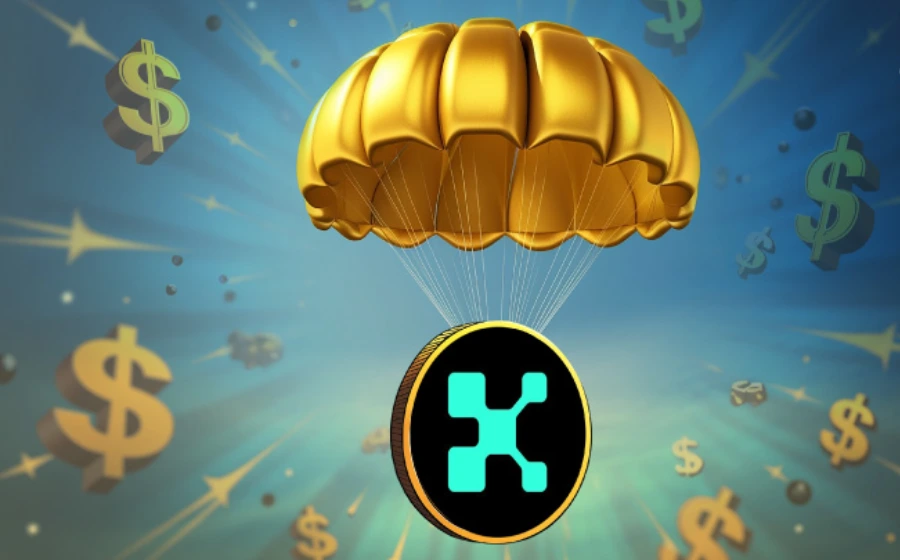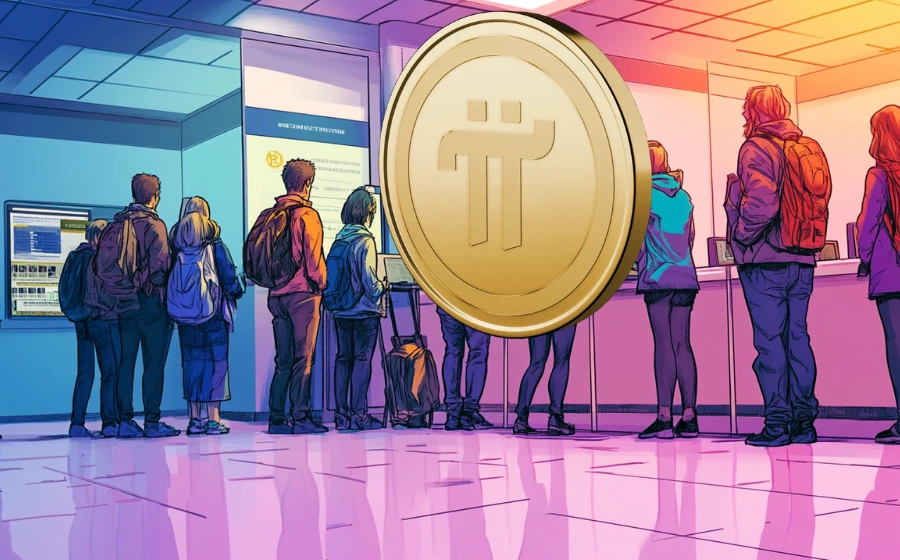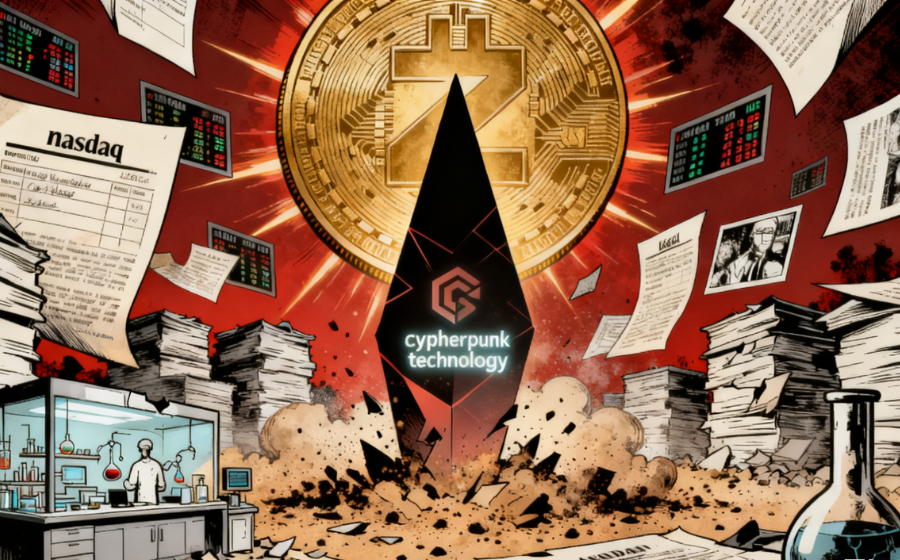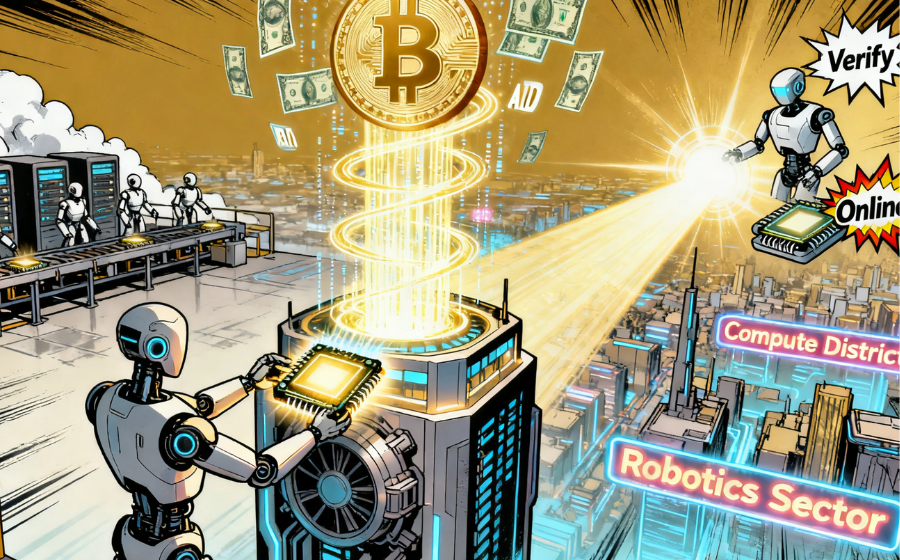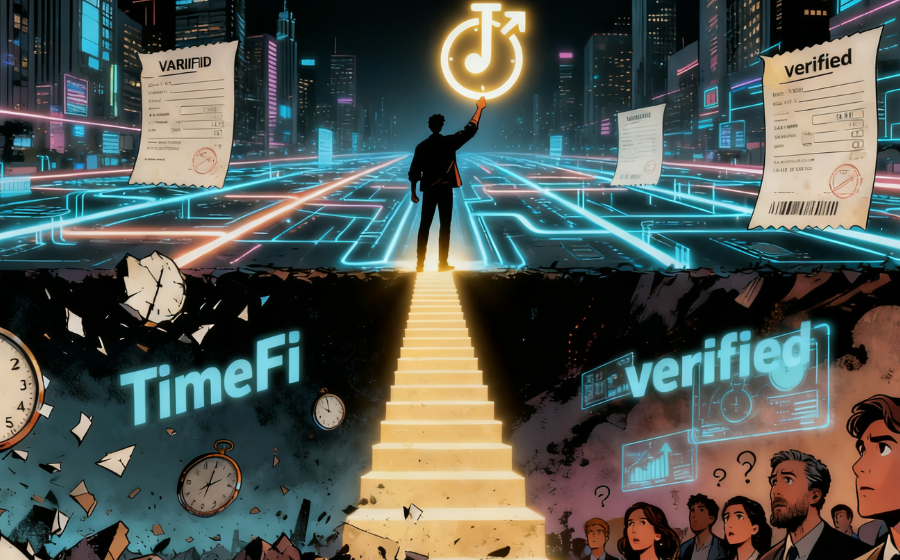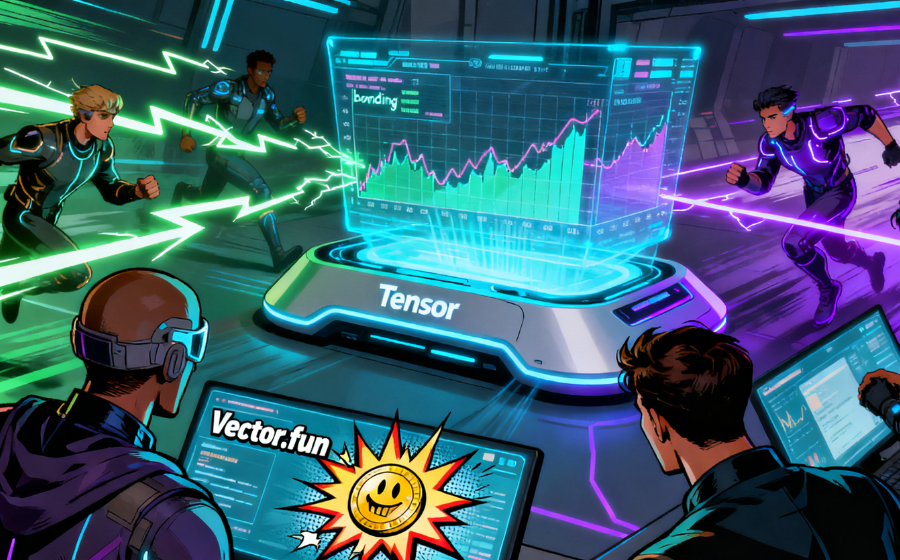
KEYTAKEAWAYS
-
Tensor transformed Solana from a post-FTX “broken ecosystem” into a high-speed financial playground by building a trader-first liquidity engine rather than a traditional NFT marketplace.
-
Vector.fun pushed Tensor beyond NFTs by turning memecoin trading into a social experience, creating the first governance token on Solana with verifiable, sustainable cash flow through a 50 percent revenue share.
-
TNSR evolved from a governance token into a financial asset backed by real revenue while Tensor’s hybrid security council and high-threshold governance model introduced a new blueprint for Solana-native protocol design.

CONTENT

RISE FROM THE RUINS
When the shockwaves of FTX’s collapse rippled through the crypto world, Solana was labeled a “broken ecosystem.” Liquidity vanished, tokens crashed, and project teams dissolved. A once-thriving network suddenly stood on the edge of survival. Yet in the midst of the wreckage, one team decided not to retreat but to double down. The story of Tensor begins here.
Ilja Moisejevs and Richard Wu were not typical crypto natives. They came from financial engineering and system architecture backgrounds, used to dealing with microsecond execution speeds and high-throughput systems. When they saw Solana’s near-instant confirmation and minimal gas fees, they didn’t see NFT art—they saw a trading terminal, data streams, and high-frequency algorithms. To them, NFTs were not about art’s tokenization but the visualization of trading itself.
From the very beginning, Tensor rejected the aesthetics of “collectible platforms” and built a cold, data-rich “financial terminal.” There were no colorful galleries or banners—only depth charts, candlesticks, order books, and liquidity data. For casual users, it looked intimidating. For professional traders, it was a signal: this was a place that understood markets.
On November 11, 2022—the day FTX filed for bankruptcy—Tensor started fundraising. While investors were fleeing, Placeholder invested three million dollars. Solana Ventures and Big Brain Holdings joined in. Even Solana’s founders, Anatoly Yakovenko and Raj Gokal, participated personally. It wasn’t just an investment; it was a declaration that Solana was still worth betting on.
Tensor became a symbol of rebuilding trust in Solana—a liquidity terminal rising from the ruins, a small spark of technology lit in the heart of a bear market.
THE ALCHEMY OF ALGORITHMS
Tensor earned the title “the Blur of Solana” not only for its incentive model or market share but because it turned NFT liquidity into a mathematical problem. It did something no one had done before—it gave non-fungible tokens a continuous pricing logic.
At the heart of it all was the bonding curve. Prices adjusted automatically with every trade—rising when buyers stepped in, falling when sellers exited. The market itself became self-regulating.
Linear curves offered stability for mature collections, while exponential curves amplified volatility, multiplying gains for liquidity providers. Each curve formed a miniature economy where traders and market makers competed to find the ideal Delta—the golden increment that balanced profit and depth.
Tensor’s five core programs—Marketplace, AMM, Whitelist, Escrow, and Price Lock—operated like synchronized engines. Its modular design meant Tensor wasn’t just an exchange but a reconfigurable trading system. Developers could use Rust Crates or the JS SDK to build their own bots or frontends, turning Tensor into Solana’s financial backbone.
Liquidity was reorganized. Tensor aggregated listings from all competing platforms and displayed them on a single interface. It absorbed their depth and made itself indispensable. This was the “liquidity black hole effect”—once traders saw the whole market from Tensor’s terminal, they had no reason to leave.
The strategy worked. By early 2025, Tensor captured over 60% of Solana’s professional NFT trading volume. But that was just the beginning.
WHEN MARKET MAKERS MEET MEMES
By late 2024, the NFT market was fading. Royalties were under dispute, trading volume shrank, and narratives lost steam. Meanwhile, Solana’s memecoin mania was exploding. Pump.fun allowed anyone to launch a token in seconds, and new “overnight millionaires” appeared daily. Tensor saw the signal: if NFTs visualized trading, memecoins tokenized emotion. Both were liquidity games.
Vector.fun was the next step. Tensor moved its high-frequency trading technology into the SocialFi arena. Unlike Friend.tech, Vector didn’t financialize people—it socialized trading. Users could scroll and trade in the same interface. Every buy and sell was broadcast in real time, turning transactions into social signals. Some called it “Twitter for traders.”
This socialized liquidity model spread fast. Vector let retail users mirror professionals while making every trade part of a public conversation. Combined with Tensor’s ultra-fast execution and cross-market aggregation, it became the heart of Solana’s memecoin frenzy.
Then came the breakthrough: Vector.fun pledged 50% of its total revenue to the TNSR treasury. For the first time, a governance token had verifiable cash flow. The DAO was no longer symbolic—it was a decentralized company with a budget. Early data suggested annual revenue sharing of 36 to 45 million dollars. Holders were no longer voters but shareholders. Tensor had turned governance into yield.
The logic was clear: NFTs built the foundation of liquidity, Vector captured retail attention, and TNSR converted that energy into sustainable capital. The ecosystem could now feed itself.
POWER, CASH FLOW, AND THE NEW ORDER
Tensor’s governance structure represents a new Solana paradigm. Out of one billion TNSR tokens, 55% went to the community, 27% to the team, and 18% to investors. A one-year cliff locked insiders and forced long-term alignment.
Governance runs on the Realms platform. Proposals require 250,000 TNSR to submit and 10 million to pass—high enough to deter noise. The DAO employs seven Solana core developers as a security council to review all upgrades. It’s neither an anarchic DAO nor a centralized entity—it lives in the balanced space between.
Beyond governance lies capital movement. As Vector’s revenue continues to flow in, Tensor explores new ways to manage its treasury: partial buyback and burn programs, developer grants, and strategic reserves. The DAO is evolving from a management layer into a financial organism.
But risks remain. The memecoin market is cyclical—if sentiment collapses, Vector’s income could drop 90% overnight. Social trading could also attract regulatory scrutiny, especially in markets where copy trading resembles financial advice. And competition is heating up fast: Photon, BullX, and Pump.fun are building similar models. The next phase will depend on who can sustain both liquidity and narrative.
Even with these challenges, Tensor’s experiment has changed the rules. It turned trading from a mechanical act into a narrative, an intersection of identity, data, and emotion. Solana became not just a fast blockchain but a stage for financial innovation. Tensor is not simply rebuilding liquidity—it’s redefining what trading means in the age of code and capital, a new language connecting algorithms, emotion, and human belief.
